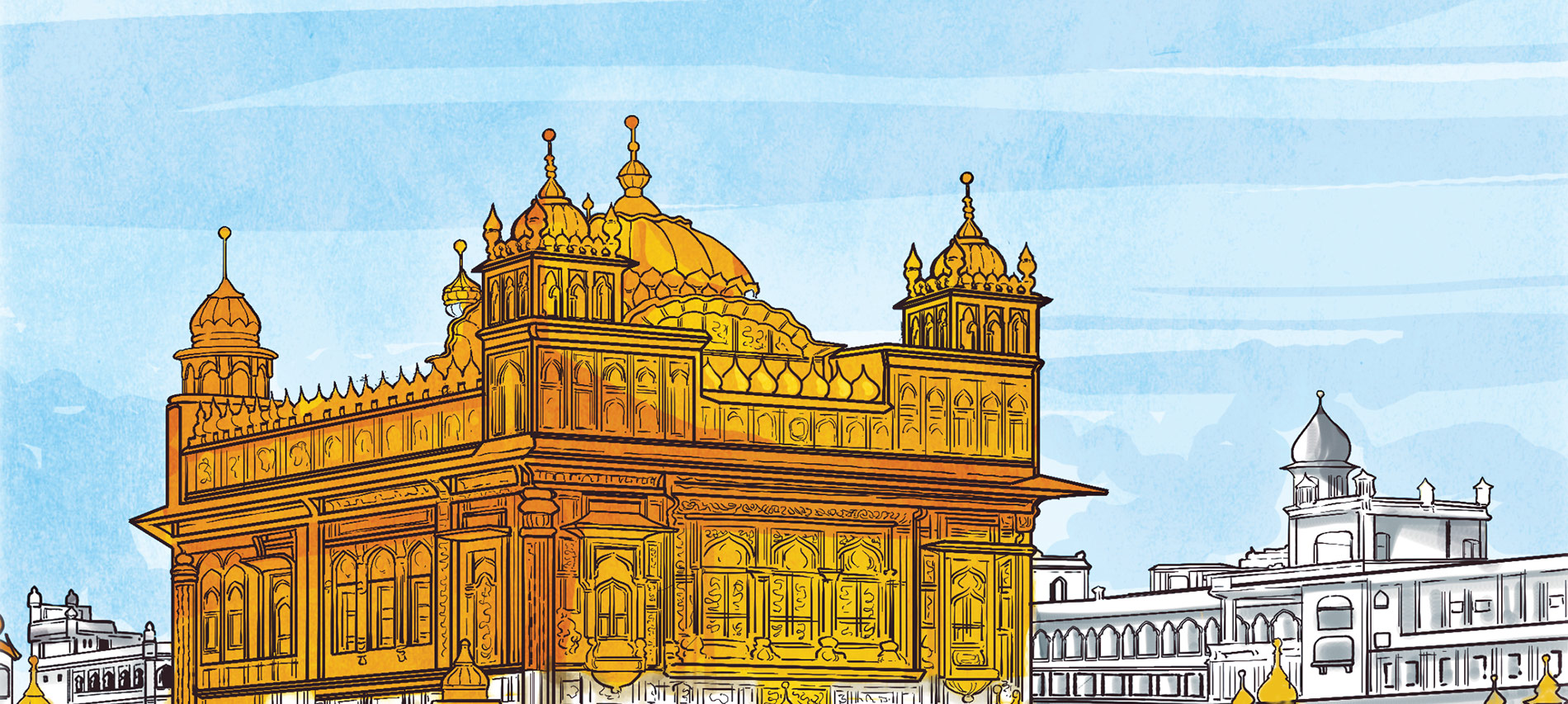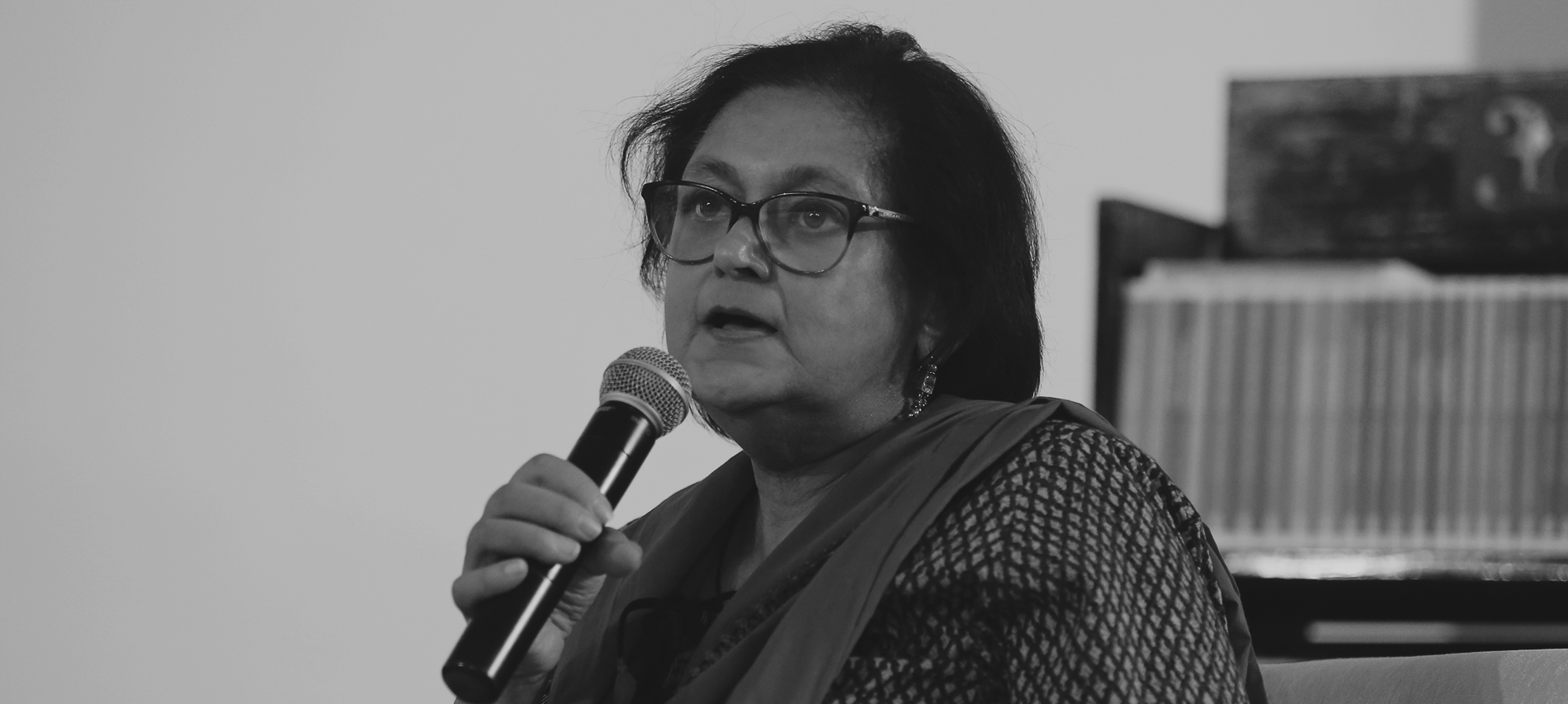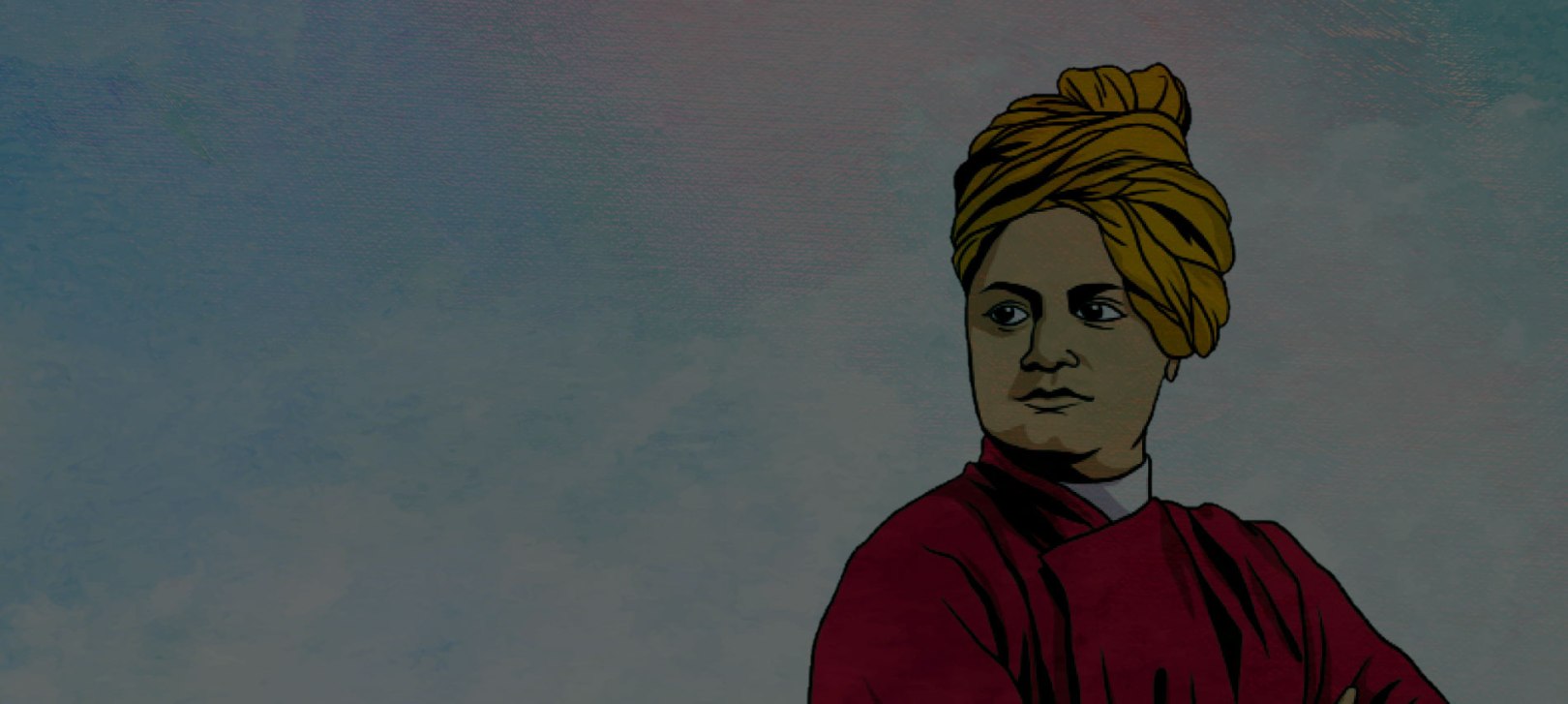Chintamani Dev Gupta is on a trip to a bird camp near Lake Sat Tal! Away from the drudgery of urban life in Gurgaon, Chintamani finds himself near the cool, blue water of the lake and dives in for a swim. But when he emerges out of it, things look different. Where is he?
Find out with Namita Gokhale’s beautiful new novel for your little one, ‘Lost in Time: Ghatotkacha and the Game of Illusions’.
Here’s an excerpt from the book telling you where it all started.
A figure was approaching. He, she, it, was holding a burning branch of wood and breathing deeply. I had slouched down, suddenly tired and drowsy, in a bed of dry leaves. An enormous face came into view a long way above me. I wondered if I was dreaming, but the warmth from the flaming torch seeped into my bones, as did the long, careful breaths of this giant. I sat up bolt upright.
He was sniffing me, and I could smell him too. The tang of leaves and the forest, with a whiff of animal and the scent of human.
‘Who are you?’ he asked in a language I didn’t understand. And yet, strangely enough, I did. Was this telepathy?
‘And who are you?!’ I asked back, the question was put forward in sheer panic mixed with some cunning. I was still trying to take in the awesome size of this Godzilla, and figured my question might help establish a bond with this primeval creature. But then, how would he understand my question, which probably sounded more like a squeal?
‘I am Ghatotkacha,’ he replied. ‘I am the rakshasa Ghatotkacha, born of the lord Bhimasena and the lady Hidimbi. I rule over hill and vale, forest and stream to protect the spirit of the forest and all who live in it.’
I understood this too, through some sort of teleprompter that seemed to have lodged itself somewhere in the left lobe of my brain like a Google Translate implant.
‘I am Chintamani Dev Gupta,’ I replied tentatively. But it wasn’t me speaking at all, perhaps some sort of decoder that seemed to be picking up on signals from my brain. Take control, I told myself, take control, or you will lose this mind game.
‘I am speaking Paisachi, but I am fluent in Prakrit and Sanskrit too,’ the giant replied.
He had huge red eyes that were lit up by the burning torch he held in his hand. But they were kind eyes . . . there was not even a hint of cruelty in them.
‘And don’t worry, I am not trying to take control of your mind!’
Weird, weirder, weirdest. He could actually read my mind! Holy cow! This situation was just impossible. I pinched myself even harder this time, so that I might now wake up from this fast-accelerating nightmare.
It only gets “weird, weirder, weirdest” from here on! You wouldn’t want to miss it! Grab your copy and dive right into the charming world of Ghatotkacha!

Tag: Indian culture
Let’s Revisit the Golden Temple with Amma and Her Boys!
Remember when Bhakti Mathur and her boys took you and your little one on an enchanting journey to Amritsar’s Golden Temple? The beautiful architecture of one of the holiest places for Sikhs, the delectable langar served after prayers, a dip in the holy sarovar — Amma and her boys take you through an experience that stays with you forever.
Let’s take you through the Golden Temple once again through the pages of Amma, Take Me to the Golden Temple.
The rich history of the Golden Temple that stands tall for decades

The yummy taste of the karah prasad!

The peace and calm of the glorious inner sanctum

Taking a dip in the holy water facing Harmandir Sahib

The exquisite, golden palanquin carrying the Guru Granth Sahib

The history of the Golden Temple comes alive with the stunning illustrations in Bhakti Mathur’s Amma, Take Me to the Golden Temple.
Now get ready to join Amma and her boys on an exciting trip to the famous Tirupati! Pre-order your copy today!

Meet the Characters from ‘Bheem’
Jyotin Goel in Bheem has created a fascinating amalgamation of mythology and adventure in the modern setting. The plot of the book revolves around a deadly threat which has arisen from the ancient battlefields of Lanka and Kurukshetra. Ripping through the vortex of time, Bheem arrives in the twenty-first century to combat this crisis. But to make sure of his failure, a sworn enemy from the past-Ashvatthama-has also journeyed to the present.
Here are some of the characters from the riveting novel:





Don’t wait anymore, pick up Jyotin Goel’s Bheem now!

A Look Into the Works of Writer, Publisher and Festival Director, Namita Gokhale
As we move another day closer to getting our hands on Namita Gokhale’s newest book for children, Lost in Time: Ghatotkacha and the Game of Illusion, here’s revisiting the beautiful books written by the celebrated author through the years, on a wide gamut of subjects.
The Book of Shiva

Shiva: Destroyer and Protector, Supreme Ascetic and Lord of the Universe. He is Ardhanarishwara, half-man and half-woman; he is Neelakantha, who drank poison to save the three worlds-and yet, when crazed with grief at the death of Sati, set about destroying them. Shiva holds within him the answers to some of the greatest dilemmas that have perplexed mankind. The Book of Shiva by Namita Gokhale answers many interesting questions about this enigmatic deity in Hindu mythology.
The Puffin Mahabharata
A modern-day retelling of the Mahabharata, Namita Gokhale presents this timeless tale of mortals and immortals and stories within stories, of valour, deceit, glory and despair, for today’s young reader in a clear, contemporary style. A brilliant series of evocative and thoughtful illustrations by painter and animator Suddhasattwa Basu brings the epic to life in a vibrant visual feast.
In Search of Sita: Revisiting Mythology
Sita is one of the defining figures of Indian womanhood, yet there is no single version of her story. In Search of Sita presents essays, conversations and commentaries that explore different aspects of her life. It revisits mythology, reopening the debate on her birth, her days in exile, her abduction, the test by fire, the birth of her sons and, finally, her return to the earth—offering fresh interpretations of this enigmatic figure and her indelible impact on our everyday lives.
In Travelling In, Travelling Out: A Book of Unexpected Journeys, Namita Gokhale puts together an eclectic collection of twenty five stories that take the reader on a journey that is surprising, moving and, sometimes, mischievous. From Advaita Kala’s piece on her reaction to an intrusive security pat-down to finding one’s identity as an immigrant in Amsterdam in an essay by Ali Sethi, there is a wide range of experiences to choose from. With contributors like M.J. Akbar, Rahul Pandita, Dayanita Singh, Urvashi Butalia and others among the guides, the reader sets off on an unusual journey, one without the fear, moreover, of getting lost.
And finally, the wait for her latest work on mythology, fantasy and everything magical is almost drawing to a close! Have you pre-ordered your copy yet?

Excerpt from 'Bharat: The Man Who Built a Nation'
Dr Vineet Agarwal brilliantly retells the story of the son of Dushyant and Shakuntala, the grandson of Brahmarishi Vishwamitra in his latest book, Bharat: The Man Who Built a Nation.
Here’s an excerpt from the book.
Voices filled the royal hall of Hastinapur, bouncing off the two dozen marble pillars that supported the high vaulted ceiling. Wide latticed windows provided illumination as well as ventilation to the cavernous hall that was full of people watching the royal debate.
Aileen, ruler of the Puru kingdom, sat on a beautifully carved sandalwood throne that had been fashioned to resemble the vehicle of the moon god, the founding father of the Chandravansh. It was shaped like a chariot drawn by eight antelopes, and the king occupied the central seat, sheltered by a silver umbrella. The elderly king was presiding over a debate between his eldest son and the royal council. Of his five sons, Dushyant, the eldest, was quite simply the best.
Since the day he had first stepped into the court, the crown prince had shown a flair for solving the tricky situations that arose in the running of a kingdom. Dushyant was almost twenty-five now, and towered over his sire. Aileen saw a glimpse of his own younger self in him; they had the same tan complexion, sharp nose and dark eyes but the king had a greying beard and his face had assimilated fine lines from years of looking after the kingdom, while his son’s visage had the freshness of youth. Rigorous training had made Dushyant’s body lithe like that of a cheetah and his mind as sharp as a needle. He was practical and perceptive, and even now seemed to be winning the debate that had almost reached its conclusion.
For more than a prehar now, the councillors and the prince had been debating the need to change old policies followed by the kingdom—three hours and counting. Aileen had been trying to get his council to formulate new guidelines for more inclusive development, but to no avail. Change was not easy for anyone, let alone senior members of the court who were set in their ways and accustomed to their lavish lifestyles, but the king hoped that his son would be able to convince them.
Rising to his full six feet, Dushyant addressed the assembly emphatically, ‘The time has come for Hastinapur to introspect. We must decide which of our traditions are redundant and which can be retained. As the wielder of Shiva’s axe, Parshu Raam showed us, there is no place for practices that encourage corruption in this new world order.’
Aileen watched the seasoned councillors wince, a tiny smile playing on his lips. The use of Parshu-Raam’s name was a clever touch. Over the past year, the son of Rishi Yamdagni had gone on a rampage, annihilating autocratic rulers from the Himalayas to the southern ocean, paving the way for a new and just class of kings. Brahmins, Vaishyas and Shudras were the new Kshatriyas of Nabhi-varsh and what remained of the old guard was still haunted by the prospect of Parshu Raam’s return. Aileen himself had been lucky to escape with his life. His superior, Kartavirya Arjun, the emperor of the world, had not been so fortunate.
Dushyant’s closing argument had made even the most reluctant of councillors agree to the demand for modernization and as they passed a unanimous motion in favour of the idea, Aileen dismissed the court for the day and called his son to the throne.
‘My son,’ he said in a tone that betrayed his satisfaction, ‘seeing the way you have convinced the senior councillors to change their stance for the benefit of the people, I am confident that you are quite ready to look after the affairs of this kingdom. Acharya Dirghatamas, other senior members of the family and I concur that the time has come to pass on the crown of Puruvansh.’

5 Important Things that Make up a Puja Thali
When you look at a puja thali, it has many colours. There’s haldi, kumkum (sindoor), abeer which is black, but ‘abeer’ also means red. There’s a white powder and gulal (pink).
Colours are important. It’s almost as if we are playing Holi with the gods. The colours in a puja thali are to excite various sense organs (indriyaan). Fragrant things for smell (like, chandan), different colours for the eyes, a bell for sound, prasad for taste, a lamp and its glowing light (deep) for touch.
If you ever wondered the significance of all the things that go into a puja thali, here are the reasons – from India’s bestselling mythologist, Devdutt Pattanaik.
Haldi
In earlier times, women used to bathe with turmeric to give their skin a golden glow. In Puri temple, Krishna’s sister Subhadra has a yellow face and is called Haldi-mukhi (haldi-faced).

Kumkum
Red kumkum is associated with female gods and you’ll find it mostly in temples of the Devi.

Chandan
After you apply Chandan paste, you have to patiently wait for a while before its colour starts showing. Its fragrance is released immediately. This is a symbol of karma. Once you work, you will get the fruit of your labour.

Bhasm
Anything you burn is reduced to bhasm (ashes). You don’t have to work for it. Finally, you’ll be turned to ash. Shiva, who is a bairagi (an ascetic), smears it all over his body.

Rice
Haldi-kumkum-rice together probably conveys that to grow anything you need two things.

What are the other important things that go in your puja thali? What is their significance? We’d love to know!

6 Myths Around India that Bollywood Has Debunked or Upheld
From Raj Kapoor to Amitabh Bachchan to Shah Rukh Khan, Bollywood has been India’s best cultural ambassador all over the world. In her remarkable new book – Bollywood Boom – Roopa Swaminathan shows how Bollywood has the power to mould India’s fortunes by winning the hearts of people across continents.
Amidst its rising power to influence the world, Bollywood has both debunked and upheld few myths that surround India and Indians. Here’s a look at six of those popular myths!
Myth 1

When lead characters in mainstream Bollywood films were supposed to have sex onscreen, the scenes showed the rubbing together of two flowers or cutaway shots of birds chirping. But Bollywood has come a long way since! It’s a case of building up an already popular myth – that Indians don’t do sex, or they do it mysteriously – and then busting it some decades down the line.
Myth 2

That’s one of the myths that Bollywood has busted in recent times. Indian girls do choose how their lives play out and that is well-represented by a plethora of modern characters in Hindi cinema. The female protagonist in Love Aaj Kal makes a mistake, gets married to the wrong guy but has the guts to break it off and walk into the sunset with the right guy at the end.
Myth 3

When it comes to sex, Indians have increasingly started to explore and choose. The sentiment is reflected in this new era of Bollywood. In Ek Main aur Ek Tu, the female protagonist openly claimed to have slept with more than a few guys.
Myth 4

Either your parents’ house or your home after marriage – apparently, those are the only options that two consenting adults in a romantic relationship can manage. That myth has been debunked! Salaam Namaste deals with the pros and cons of ‘living together’ before getting married
Myth 5

Gone are the days when the international community viewed India only as this mystical land, full of old-world charms. New Bollywood movies show India in its full range now. Much of the diaspora who travel to India do so after being fascinated by an India that they’ve seen in Bollywood films.
Myth 6

Not every Bollywood film is laden with songs and dances. And certainly, not every aspect of Indian life is a high-volume drama. Increasingly, the new wave of Bollywood has brought to the fore other sensibilities of the Indian culture.
Do you, too, have a myth in mind that you think Bollywood has busted or upheld? We would love to know!

6 Hindu Concepts Made Easy by India’s Bestselling Mythologist
Mythology is layered with legends within legends, full of perplexing and astonishing anecdotes, and buzzing with a cast of larger-than-life figures.
India’s bestselling mythologist – Devdutt Pattanaik simplifies the complex concepts of Hindu mythology.
Here are six Hindu concepts that Devdutt Pattanaik makes easy in his compilation – Devlok with Devdutt Pattanaik 2!
Have you ever wondered what Aatma or Soul really means

A lot of us would have seen the ritual of Aarti

Dhyan and Darshan be like Introspection and Extrospection

Amrit – the nectar of immortality!

Prakriti – the Nature, and Sanskriti – the Human World

Fasting has deep meanings through Hindu mythology

After the sensational response to Devlok with Devdutt Pattanaik part 1, prepare to be educated, entertained and moved as the author delves into the exhilarating variety of Hindu mythology in Devlok with Devdutt Pattanaik 2.

What Aurangzeb Loved: 6 Things that Moved His Heart
Aurangzeb was an enigmatic king. To quote Khafi Khan, the laudatory eighteenth-century historian of Aurangzeb’s reign, who, comparing Aurangzeb to the Persian ruler Jamshid said, “To attempt a summary of the major events of a fifty-year reign of an emperor the equal of Jamshid is to measure the ocean’s water with a pitcher.”
There were many layers to Aurangzeb, many things that inspired and moved his heart.
Here are six instances from Aurangzeb’s life that reveal his loves and passions!
He had a passion to carry the Mughal legacy forward and building a great career

He had a deep love for literature and poetry

Few know about Aurangzeb’s whirlwind romance

Leisure and music moved his heart

He had a passion for justice

And he loved mangoes!


Fascinated? Looking to read more about this Indian emperor who is often misunderstood? Get Audrey Truschke’s Aurangzeb: The Man and the Myth here!
12 things you didn’t know about Vivekananda
When we think of Vivekananda, the image is that of a saintly monk. But was he really that?
Swami Vivekananda was nothing like the monks we have known forever. He was confined neither by history nor by ritual, and was constantly questioning everything around him – including himself. He broke numerous stereotypes which he deemed regardless and harmful for mankind. There’s a lot that we can learn from him and more importantly, there’s a lot we can learn about him.
Here are 12 things we can bet you didn’t know about Swami Vivekananda:












***
With his book The Modern Monk, Hindol Sengupta deconstructs the accepted, idolised image of Swami Vivekananda, giving us the coolest monk, whose ideas and thoughts are relevant even today.
***


















